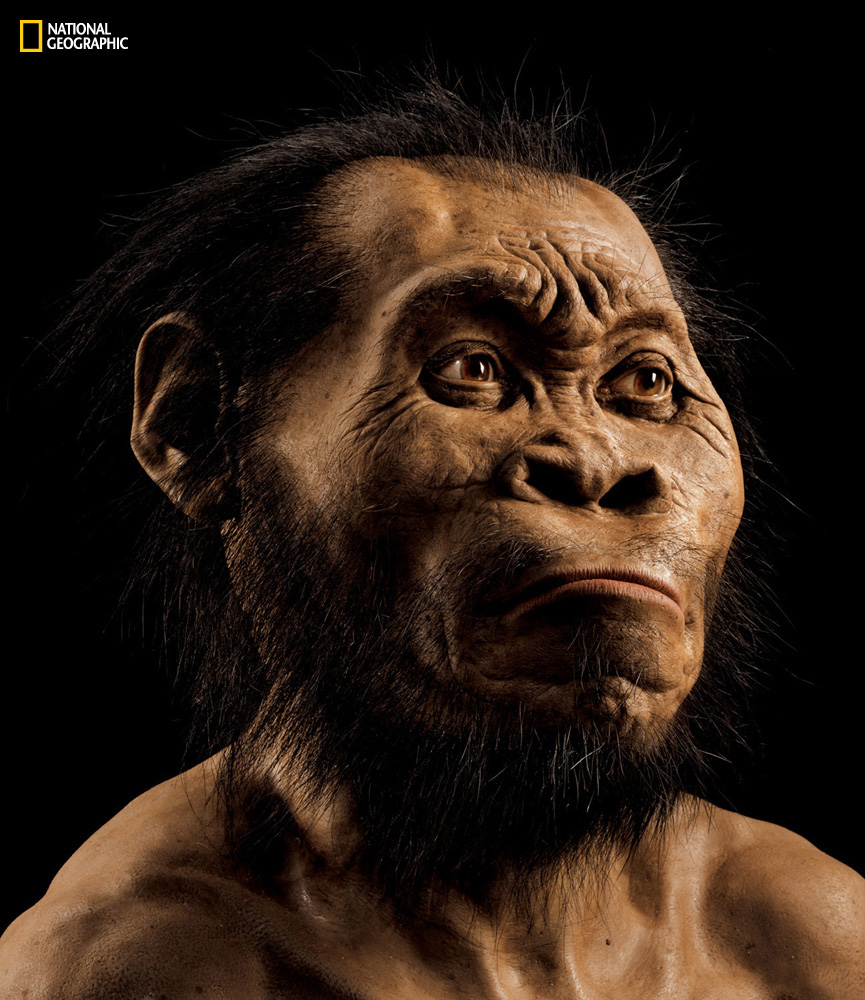JCU team says hominid lived alongside modern humans
James Cook University scientists have discovered that primitive hominids lived in Africa at the same time as humans – the first time this has been established.

JCU’s Professor Paul Dirks and Associate Professor Eric Roberts have spent the past few years analysing fossils of the hominid Homo naledi, found deep in a cave system in South Africa in 2013. The pair were involved in investigating the site and describing the find in a paper released in 2015.
Professor Dirks said using state-of-the-art dating techniques at JCU and other facilities in laboratories around the world, they have now found Homo naledi to be between 236,000 and 335,000 years old.
“The oldest dated fossils of Homo sapiens in Africa are around 200,000 years old. And now we have a very primitive looking hominid that probably existed at the same time as them. This is the first time one of these primitive hominids has been found in association with more modern humans in Africa,” he said.
Professor Dirks said dating was performed on fossil remains, as well as the surrounding sediments. We have also started work on fossils found in a recently uncovered second chamber deep in the cave system and distinct from the original site of the Homo naledi discovery. He said the implications of the new dates are profound.
“When we first identified the fossils, most of the paleo-anthropologists on site were convinced that they would be a million or two million years old, but we have now shown they are much more recent. It means that a primitive hominid persisted on the landscape in Africa for a very substantial period of time. Well beyond what paleo-anthropologists predicted to be possible.”
He said the structure of Homo naledi’s hands meant it could have been a toolmaker.
“The new dating puts it on the landscape at a time from which we find lots of tools in Africa in the middle stone-age. One of the implications of the new dates is that it’s no longer automatically possible for us to assume that early homosapiens that were making these tools.”
Associate Professor Eric Roberts said they are confident of the new dates.
“Much of the initial work on the age range was done here at JCU in our advanced analytic centre. But to get the final date range we used ten different labs and six different techniques which also involved double-blind testing.”
Dr Roberts said the second chamber is even deeper in the cave system.
“It’s significant because one of the questions after the discovery of the first chamber was whether we had what is known as a ‘chimera’ – meaning some mythical animal composed of different parts of other animals that doesn’t really exist.
“But the new chamber shows the species is what we originally interpreted it as. We have the same morphology on a skeleton and two other partial skulls in the chamber,” he said.
Dr Roberts said working in the tight confines of the cave system is challenging.
“The site is difficult to get to and requires some very tight squeezes. Pretty much the only geologists to have worked in the newly discovered second chamber so far are JCU scientists. And the ones that have gotten in are as small as myself or smaller.”
Professor Dirks said it’s anyone’s guess why the hominids were in the cave system to begin with.
“There’s a big debate, on whether it’s a burial ground or they were trapped there. They could have been chased by lions or other humans, they could have got stuck in the cave. There are enormous storms in the region and there is evidence of meteorite impacts of a similar age in the area. You can speculate all you like, but at the moment the original hypothesis that they were placed there on purpose, still holds.”
He said the find shows the history of evolution is far more complicated than just a straight sequential history.
“We have many different branches on the family tree and it is only fairly recently that there is only one survivor on the landscape. The new dating of the fossils opens up all sorts of possibilities for an interchange of tool use, cultural activities and behaviours between Homo naledi and homo sapiens,” said Professor Dirks.
Link to video and images, background and papers: here
Background:
- Homo naledi had a tiny brain, about the size of an orange.
- It stood about 1.5 meters (about 5 feet) tall and weighed about 45 kilograms (almost 100 pounds).
- Homo naledi’s teeth and skull are similar to those of the earliest known members of our genus. The shoulders are more similar to those of apes and the extremely curved fingers suggest climbing ability. Its feet are similar to modern humans and this and its relatively long legs suggest it was well suited for long-distance walking.
- The discovery of Homo naledi in the Rising Star cave system outside of Johannesburg, South Africa, was announced by the University of the Witwatersrand, the National Geographic Society and the South African National Research Foundation on September 10, 2015.
More Information
Media Enquiries:
Professor Paul Dirks
E: paul.dirks@jcu.edu.au
M: +61 429 566120
Associate Professor Eric Roberts
E: eric.roberts@jcu.edu.au
M: +61 412 113 848
P: +61 7 4781 6947
Professor Dirks, Associate Professor Roberts and the following researchers will be in South Africa from Saturday May 6. South Africa is 8 hours behind AEST.
The following researchers were involved in the project and are available in Townsville:
Carl Spandler
P: 07 4781 6911
Christa Placzek
P: 07 4781 4756
Published:
09, May 2017